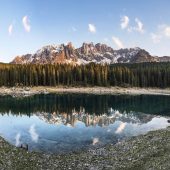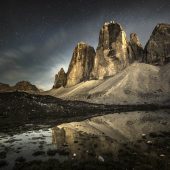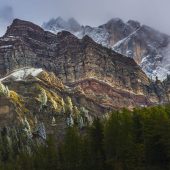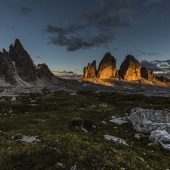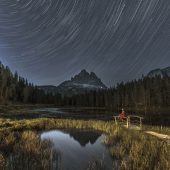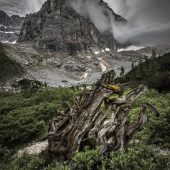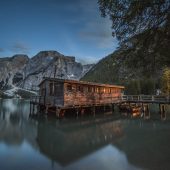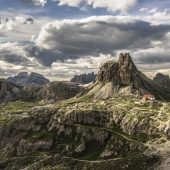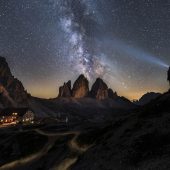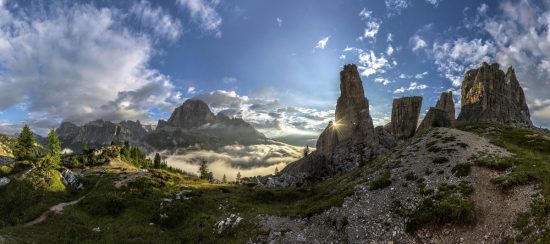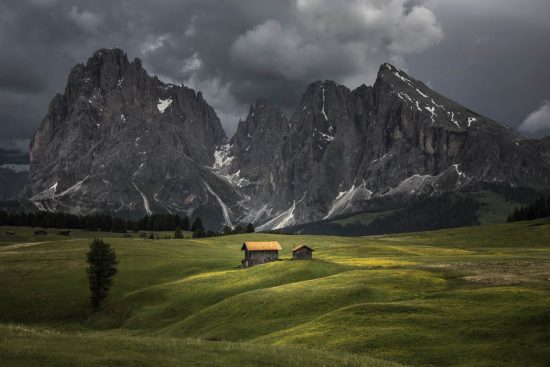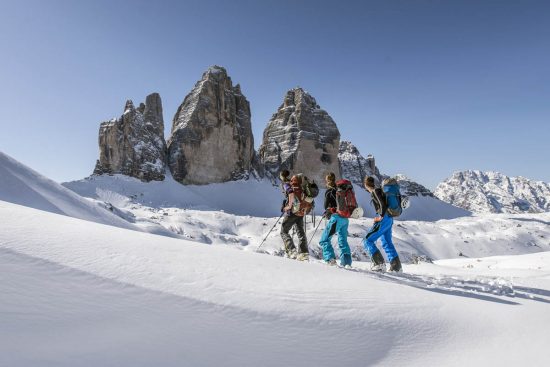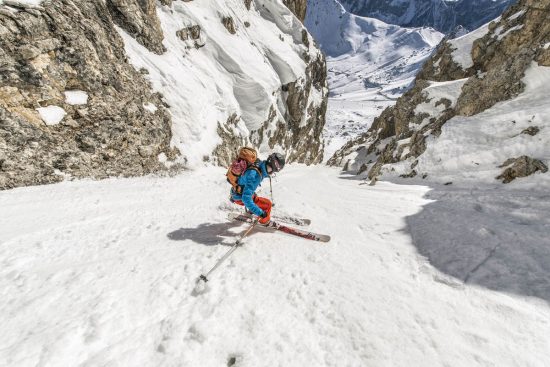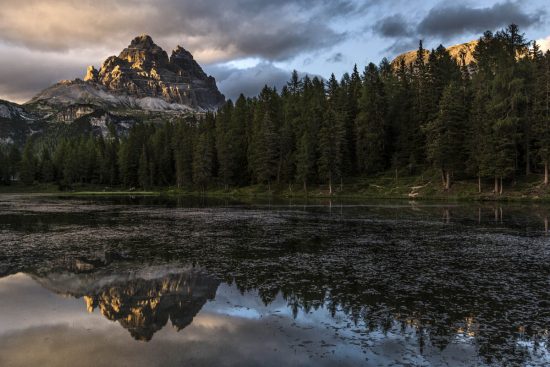Photographing the Dolomites with a Nikon D610 and D810
Professional adventure photographer James Rushforth has just completed his long term project to document 52 (it was originally 50 but choosing proved difficult) of the most scenic photogenic locations in the Italian Dolomites. His guidebook is aimed at helping aspiring and professional photographers to choose a suitable itinerary for their visit. Each of the locations details the access, major viewpoints, seasonal variations and best time of year / day you’re likely to encounter favourable conditions and light.
Living out of his van ‘Max’ the book, which is now James’ fourth guidebook to the Dolomites, took just over three years to assemble. The guide contains over 400 photos all taken with the Nikon D610, Nikon D810 and a range of Nikkor lenses.
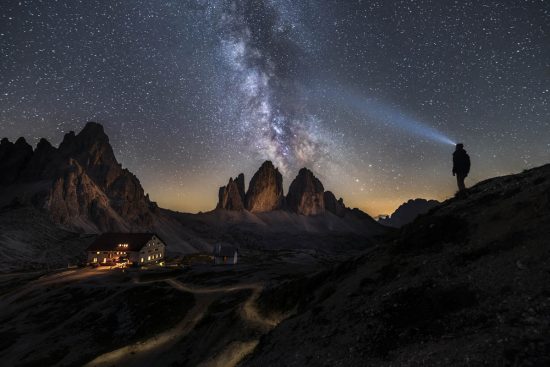
Observing the milky way as it hangs above the Tre Cime di Lavaredo north faces.
Nikon D810, 14-24 at 14mm, ISO3200, 30s at f/2.8, tripod, July.
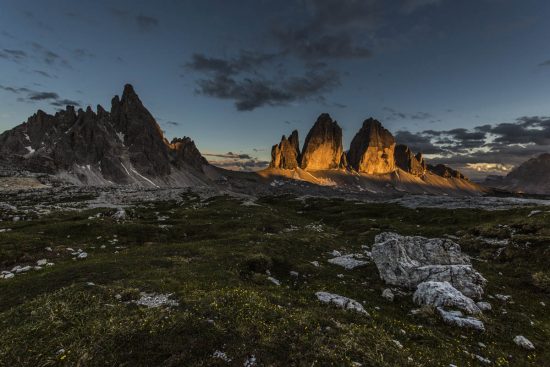
The classic view of the Tre Cime di Lavaredo north faces as seen from Rifugio Locatelli.
Nikon D810, 14-24mm at 14mm, ISO 100, 1/160s at f/6.3, June.
Equipment used
Camera Bodies:
- Nikon D610 with Kirk BL-D600 L-Bracket
- Nikon D810 with Kirk BL-D800 L-Bracket
Lenses
- Nikon 14-24mm f2.8 G AF-S ED Lens
- Nikon 16-35mm f4 G AF-S ED VR Lens
- Nikon 24-70mm f2.8 G AF-S ED Lens
- Nikon 28-300mm f3.5-5.6 G AF-S ED VR Lens
- Nikon 80-400mm f4.5-5.6G ED VR Lens
- Nikon 105mm f2.8 G AF-S VR IF ED Micro Lens
Teleconverters
- Nikon TC-14E AF-S Teleconverter III
Tripod
Filters
- Breakthrough Photography X4 ND Filter (6 stop)
- Breakthrough Photography X4 ND Filter (10 stop)
- Breakthrough Photography X4 UV Filter (x6)
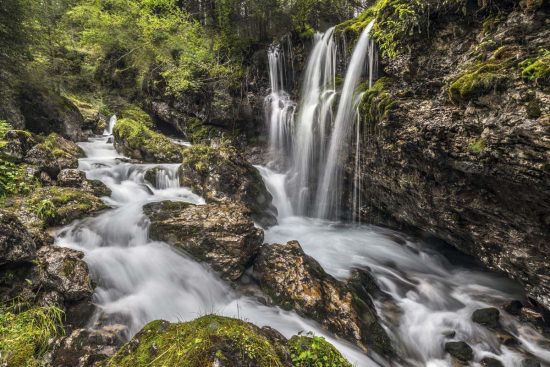
The main waterfalls at Pent de Giaveis following a period of heavy rain. Nikon D610, 14-24mm at 15mm, ISO 100, 0.4s at f/13, tripod, June.
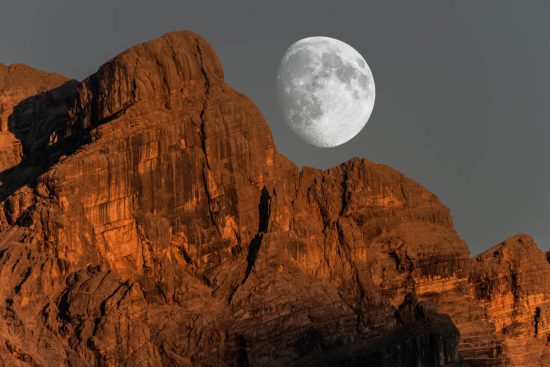
The Fanis Massif cradles the moon.
Nikon D810, 80-400 with 1.4x teleconverter at 560mm, ISO 900, 1/640s at f/8, September.
Foreword to the book by Roberto Sysa Moiola
President of Clickalps, Italian Photo Agency
This is the incredible story of this young British photographer, the hallmark of his work simply his love for adventure and the mountains. His photographs capture those special characteristics which make the Dolomites such a unique place: the warm kiss of Enrosadira on the Dolomia, the silent clouds caressing the limestone, the streams bubbling in the green forests, the clarity of the star-studded sky in this part of Italy which thus far has escaped the effects of light pollution.
Let yourself be transported by one of the greatest mountain photographers in the world, using his practical guide to find out how to reach each location, when to go and the best time of year to visit these breathtaking places.
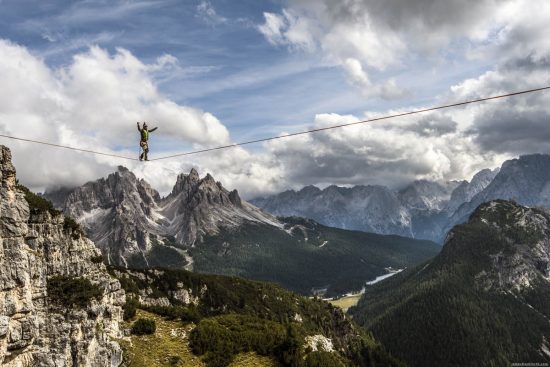
A high liner battles strong winds at Monte Piana with views of the Cadini di Misurina.
Nikon D810, 16-35 at 35mm, ISO 100, 1/320s at f/9, September.
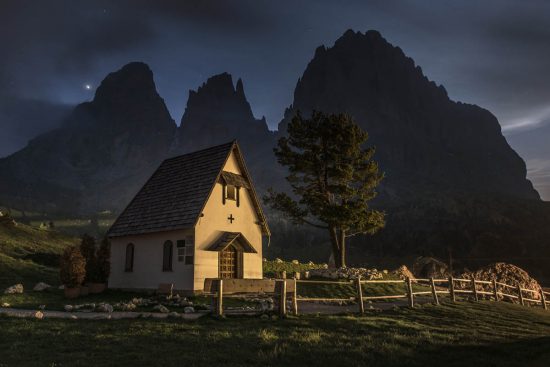
Cappella di Passo del Sella by moonlight. Nikon D810, 14-24 at 24mm, ISO 100, 30s at f/2.8, tripod, June.
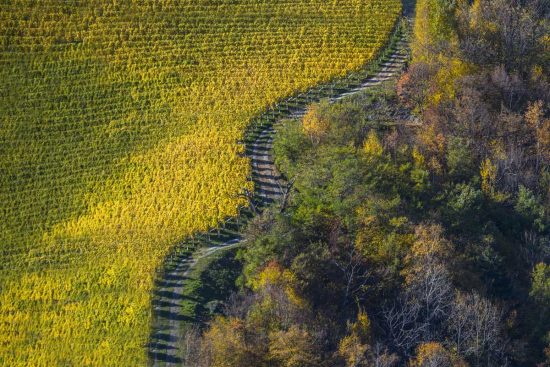
A small track weaves between terraces and forest.
Nikon D810, 80-400 at 300mm, ISO 100, 1/320s at f/6.3, November.
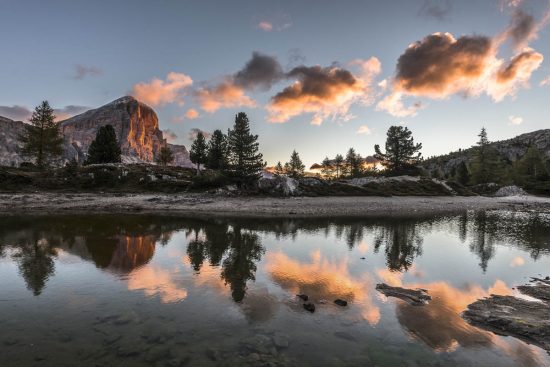
During autumn, first light illuminates the south-east face of Tofana di Rozes. Nikon D810, 16-35 at 16mm, ISO 100, 1/25s at f/8, tripod, October.
Information about the author
James Rushforth is part of the Norrøna Pro Team and is supported by Breakthrough Photography, Landcruising and Hilleburg. For more information see JamesRushforth.com.
Book links
- Take a look inside photographing the Dolomites here.
- Photographing the Dolomites on FotoVue.
- Photographing the Dolomites on Amazon
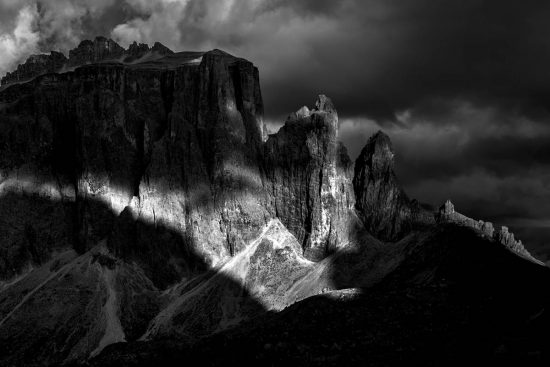
Light on the Sella Towers during a thunderstorm. Nikon D810, 24-70 at 70mm, ISO 100, 1/400s at f/10, August.
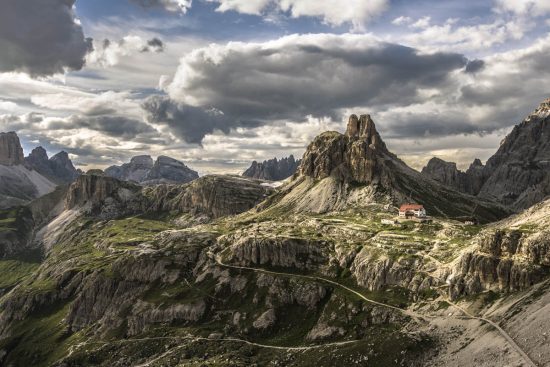
Rifugio Locatelli as seen from Forcella Lavaredo. Nikon D810, 16-35mm at 35mm, ISO 100, 1/250s at f/8, August.
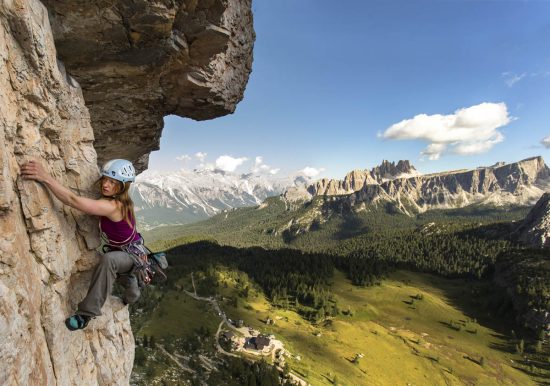
Climbing ‘Via Myriam’ on Torre Grande at Cinque Torri.
Nikon D610, 16-35mm at 16mm, ISO 100, 1/200s at f/7.1, September.
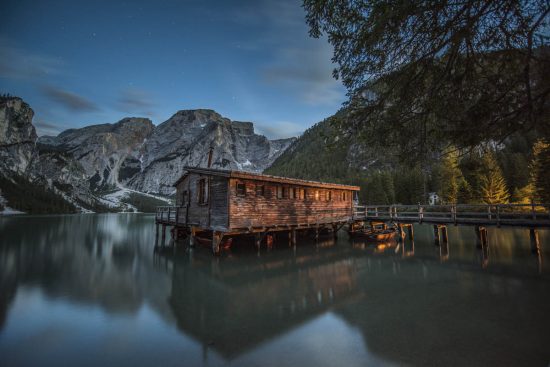
Early evening at Lago di Braies on a particularly still day.
Nikon D810, 14-24mm at 14mm, ISO 500, 30s at f/2.8, tripod, July.
Extract from the ‘Camera, lenses and captions’ page
I purchased my first ‘proper’ camera back in Summer 2011 when I bought a Canon PowerShot G12 to photograph the Dolomites for a climbing guidebook I was writing at the time. I recall shuddering at the thought of spending £380 on a camera, were photographers all mad!? Over the next six years I slowly upgraded my set-up to the current Nikon D810 I’ve used to capture the majority of images contained within this guide. Although equipment has undoubtedly advanced, the photographic process has, I’m pleased to say, remained largely the same.
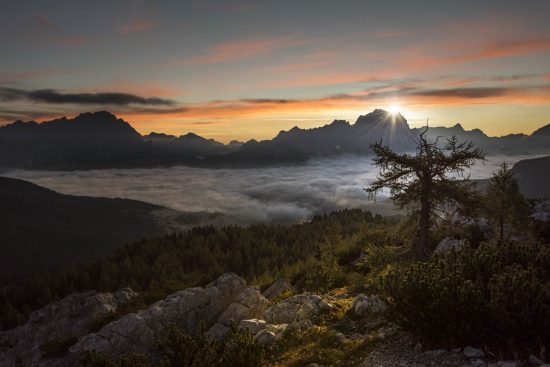
The sun rises behind the Sorapiss group as low cloud fills the Ampezzo basin.
Nikon D810, 16-35 at 27mm, ISO 100, 1/100s at f/5, September.
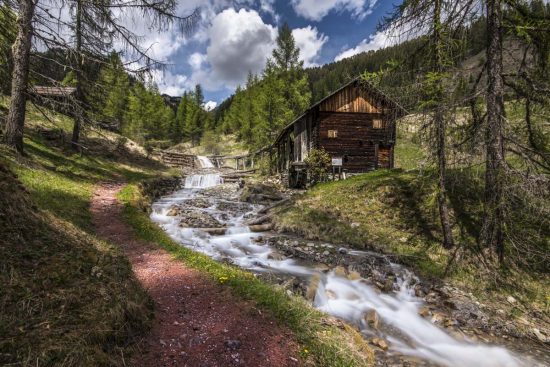
One of the many watermills found in the Val de Murin.
Nikon D810, 16-35 at 35mm, ISO 100, 5s at f/7.1, ND filter, tripod, May.
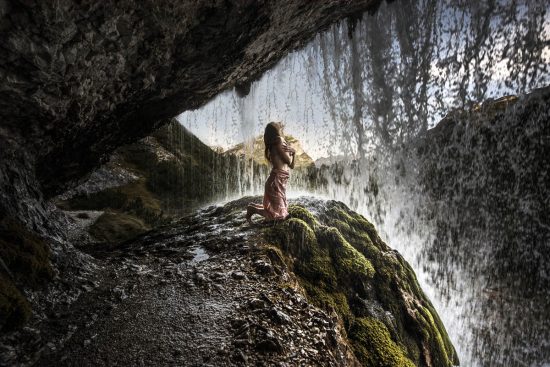
The Cengia di Mattia ledge at the Cascate di Fanis.
Nikon D810, 14-24 at 14mm, ISO 100, 1/80s at f/4.5, September.
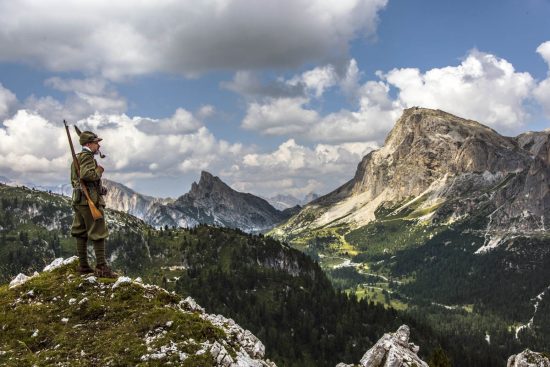
A soldier stands guard over the Passo Falzarego.
Nikon D810, 28-300mm at 45mm, ISO 100, 1/320s at f/9, August.
Having approached photography from a climbing, skiing and mountaineering background, I enjoy any opportunity for an adventure; whether it be a sunrise ascent of another peak, an unusual perspective gained by dangling off a cliff, or simply an excuse to go and explore somewhere new. I generally employ a fairly meticulous approach to my images, noting down locations with potential, recording what time the light hits a subject, checking star charts and assessing any seasonal variations. Once the conditions are optimum I can be quite tenacious in search of the desired shot and it’s not unusual for me to hike up the same peak four sunrises in a row until I’m happy with the outcome.
However, no amount of planning will guarantee good results and there is still an element of good old fashioned luck and impulsive creativity. To this end the Nikon 28-300 is perfect; it is the least sharp lens I own and also the most useful. The huge focal range means I can attach it to my rucksack via the Peak Design CapturePRO and rarely miss a spontaneous opportunity when I’m out and about. For landscape work I prefer a range of zoom lenses for the flexibility and convenience they afford. Prime lens advocates who recommend ‘zooming with your feet’ have clearly never done much shooting from the edge of a large drop! That said, I find the Samyang 14mm 2.4 and 2.8 lenses very useful for astrophotography.
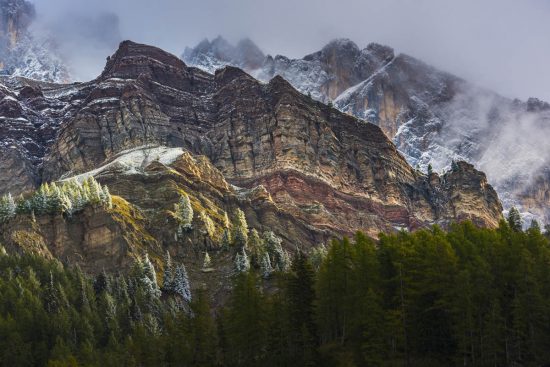
The cloud clears to reveal the west face of Crode Rosse after fresh snowfall.
Nikon D810, 80-400 at 120mm, ISO 100, 1/200s at f/7.1, May.
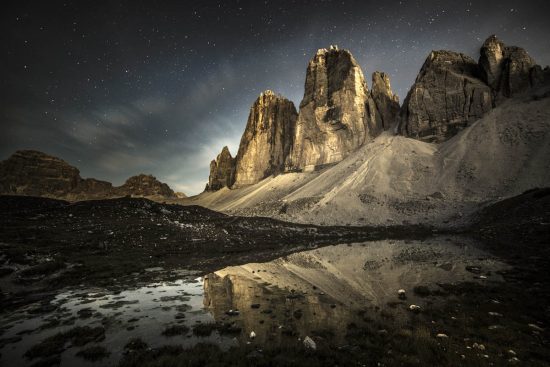
The Tre Cime by night, shot from Col Forcellina.
Nikon D610, 14mm, ISO 3200, 30s at f/2.8, tripod, October.
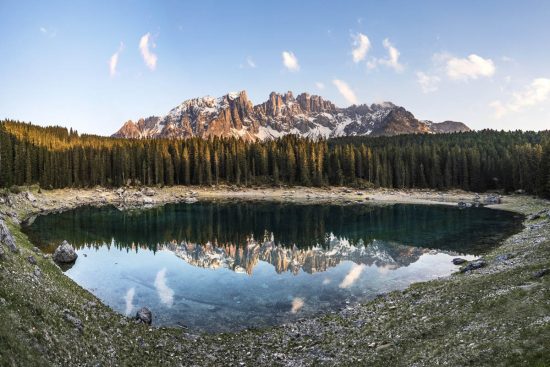
A 4 photo stitch of Lago Carezza taken from the viewing platform.
Nikon D810, 16-35 at 16mm, ISO 100, 1/100s at f/6.3, May.
The portable nature of the Gitzo Series 3 tripods means I generally take mine with me everywhere I go, although I prefer to shoot hand-held and remain fluid unless the lighting conditions dictate otherwise. I like the adaptability of a ball head in conjunction with an L plate on the camera body for quick and efficient composing. For me a remote release cable is the unsung hero of camera equipment, allowing photographers to stand back and experience the scene they’re shooting rather than witnessing it through a view finder.
I work closely with Breakthrough Photography and find their filters universally excellent. In particular I nd the colour neutral range of 3, 6 and 10 stop neutral density filters invaluable for long exposure photography and often use their UV protection filters to safeguard my lenses. As a general rule I tend not to rely too heavily on graduated and polarising filters, instead preferring to balance images during post-processing. Mountains are rarely uniform, the dynamic range of modern cameras is superb and one less piece of glass in front of your lens can only be a good thing. Adobe Lightroom is my processing software of choice, although I still find Photoshop better for complicated procedures like startrail image stacking.
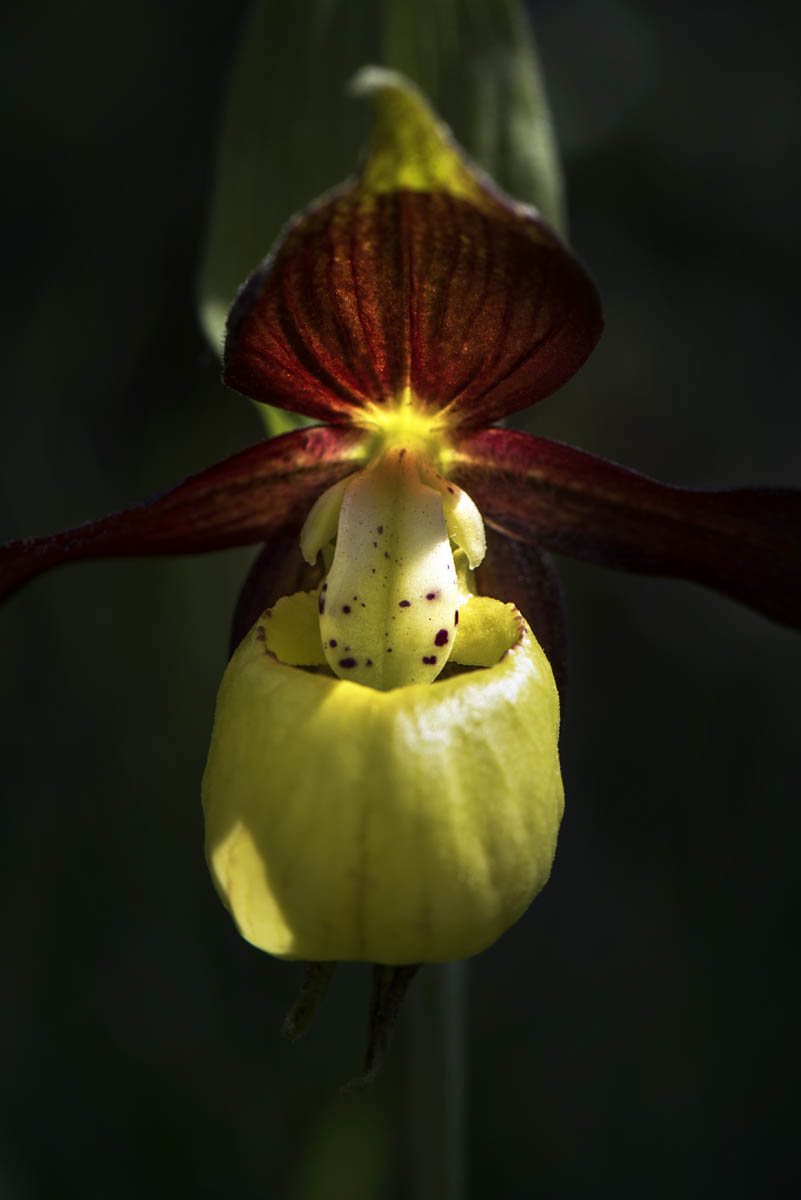
The rare and much-coveted Lady Slipper Orchid (Cypripedium calceolus). Nikon D810, 105mm, ISO 100, 1/160s at f/16, tripod, May.
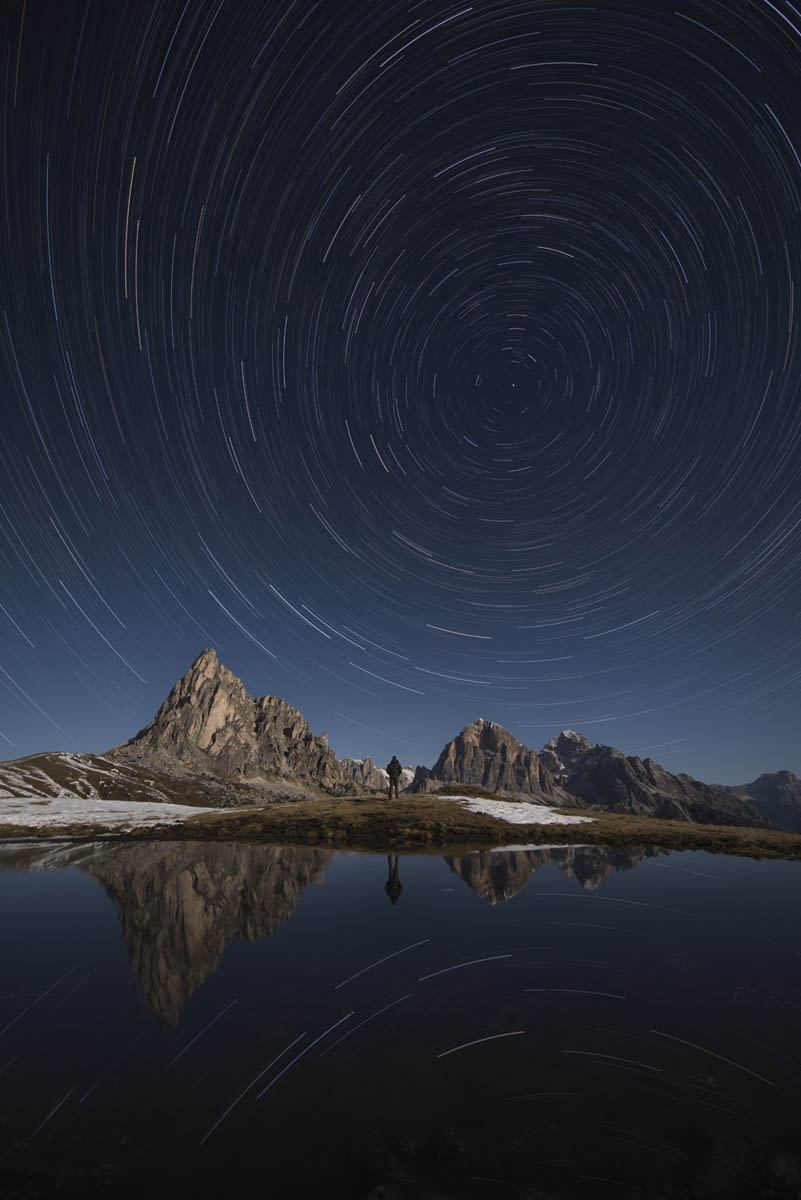
A 40 minute stacked startrail using the photographer as a foreground, with reflections of Ra Gusela and the Tofane. Nikon D810, 14-24 at 14mm, ISO 100, 30s at f/2.8 (x80), tripod, October.
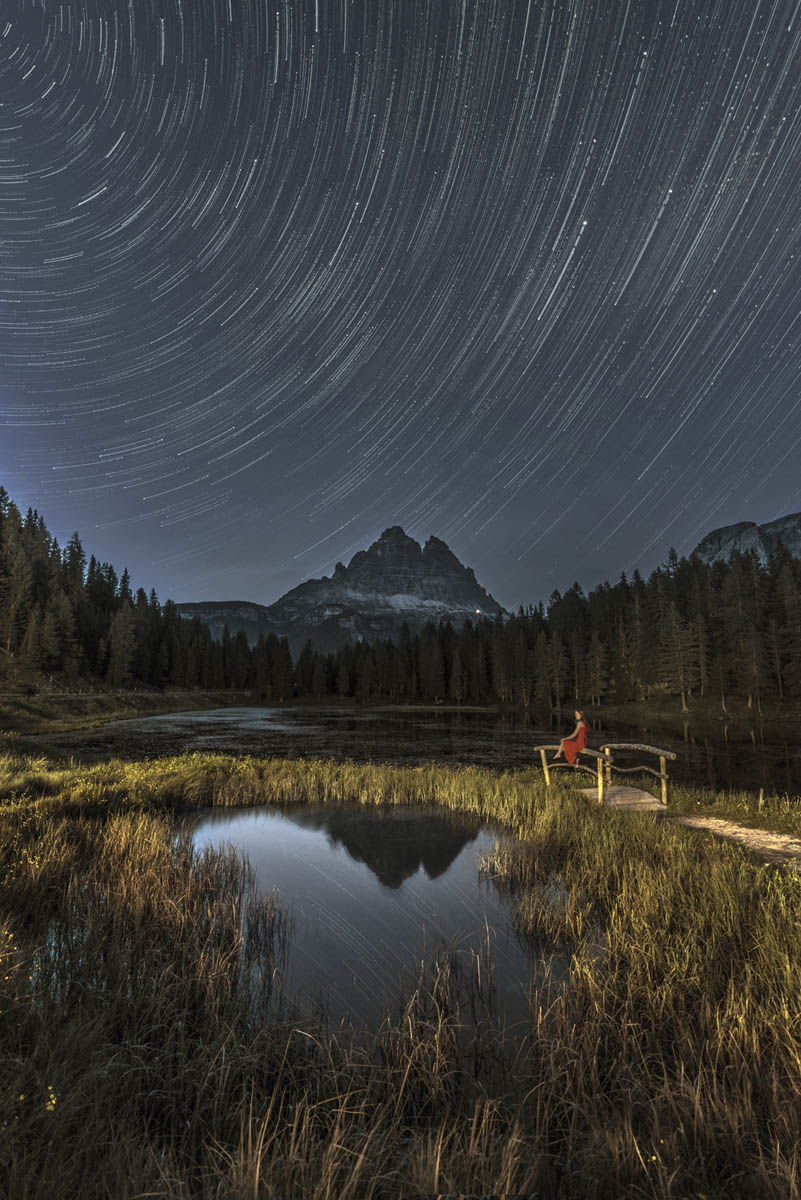
The Lago Antorno bridge presents an excellent portrait opportunity. Nikon D810, 14-24 at 18mm, ISO 400, 30s (x75) at f/2.8, tripod, June.
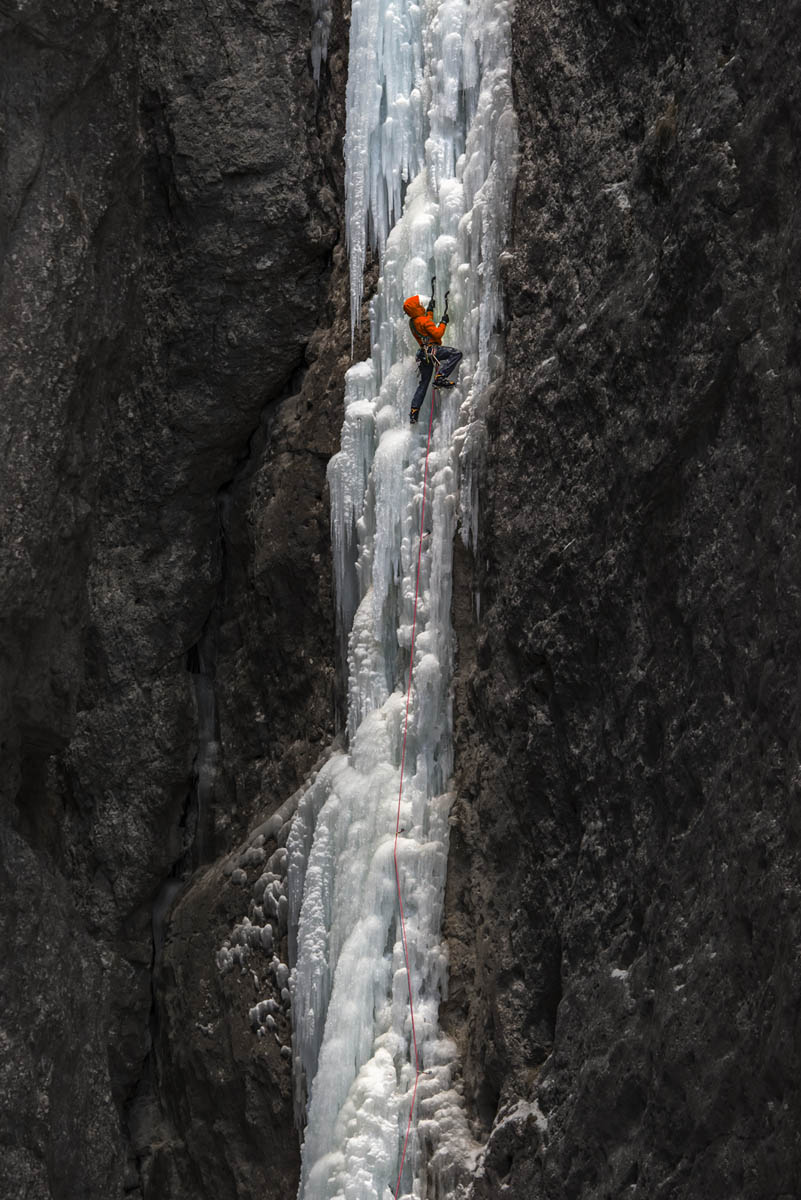
A climber on the first pitch of La Spada nella Roccia.
Nikon D810, 80-400mm at 260mm, ISO 800, 1/200s at f/7.1, January.
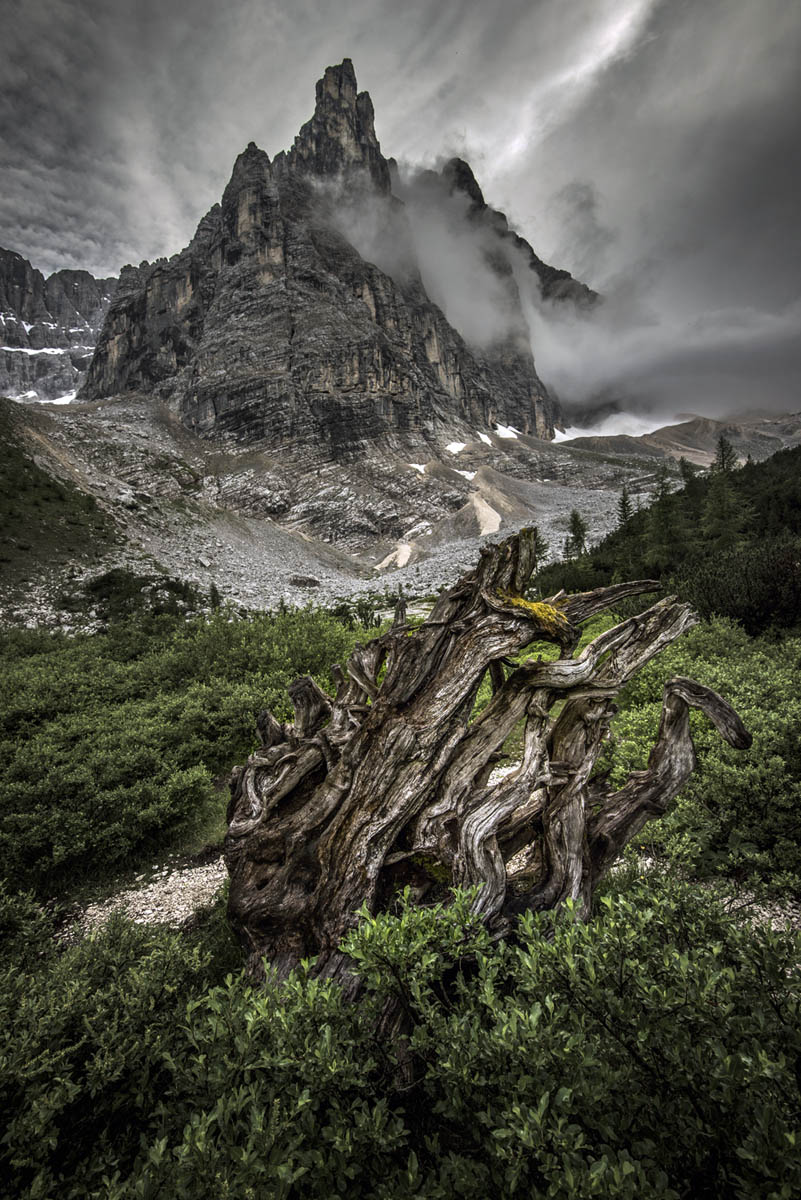
The tree stump at the south-west end of the lake.
Nikon D810, 16-35mm at 16mm, ISO 100, 1/200s at f/7.1, August.
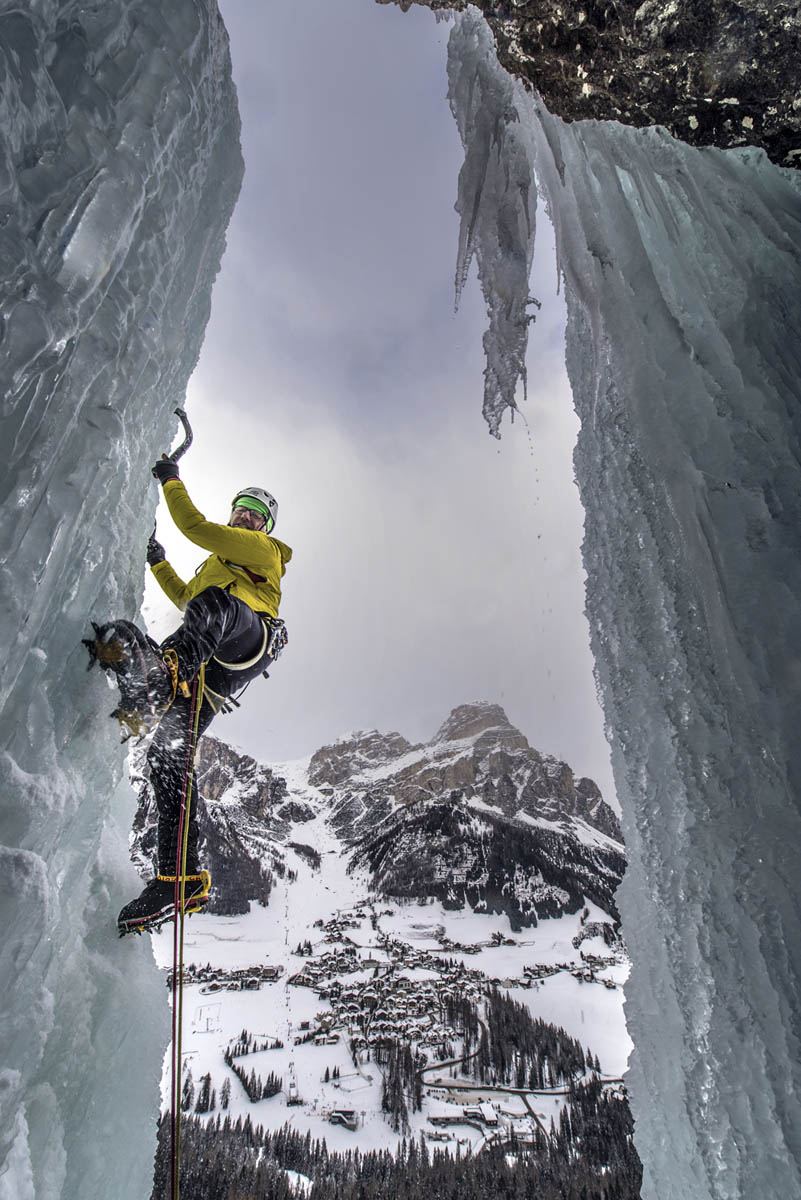
The 3rd pitch of La Spada di Damocles above Colfosco.
Nikon D610, 14-24 at 14mm, ISO 100, 1/320s at f/9, February.
If you have an interesting idea for a guest post, you can contact me here
Like: Nikkor Facebook page | Join: Nikkor Facebook group
